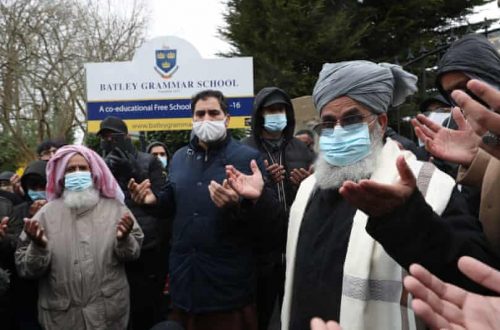This is a cross post from The CST Blog
Next week, on the eve of the 75th anniversary of Krystallnacht, the Fundamental Rights Agency (FRA) of the European Union will publish the results of its keenly awaited survey, “Jewish people’s experiences and perceptions of hate crime, discrimination and antisemitism”. It is the largest survey of its type, covering countries in which 90% of European Jews live – Britain, France, Hungary, Sweden, Belgium, Germany, Italy and Latvia.
The survey does not ask what level of antisemitism ought to somehow be expected, or tolerated. Its questions include asking Jews what they perceive to be antisemitic, what they experience, and how it impacts upon their sense of belonging and future. It does not seek to tell Jews what is or is not antisemitic. It does not define a particular level of antisemitism as “good” or “bad” or “normal”. Instead, all of that is quite correctly decided by the respondents.
So, this is an exceptional opportunity for Jewish communities, European politicians, and researchers, to understand both Jewish experiences of antisemitism and Jewish perceptions of antisemitism. The hope and intention is that this gives an urgently needed kick start for improved protection of European Jews.
The FRA collects data on human rights and racism for EU policy makers. CST has worked very closely with both it and European Jewish partners for many years. This survey arose from our shared concern that Europe’s politicians and lawmakers needed to understand, and act upon, a situation that has worsened considerably since the year 2000.
Crucially, our concern was shared by the European Commission, which actually ordered the survey be undertaken. They needed it, because most countries (Britain being an exception) held insufficient data on antisemitism. Furthermore, individual countries could be better held to account for their efforts.
Opposing antisemitism in post-Holocaust Europe should be the most basic of human rights issues. Disgracefully, it is not. Jewish concerns and motives are misrepresented, treated with suspicion, or simply lied about, by all too many supposed anti-racists: including sections of the media, trade unions and churches, where urges to attack Israel and so-called Zionists overwhelm other considerations. That some Jews embrace this corrupt enterprise merely deepens their comrades’ contempt for mainstream Jewish (therefore so-called Zionist) concerns.
Regardless of the FRA survey, the reality and impact of European antisemitism has been plainly visible in France, with Jews having been murdered in cold blood, and thousands of French Jews having moved overseas. Hungary is also very worrying, but the problem there is far right nationalists who blame Jews for socioeconomic difficulties: what you might call “the old antisemitism”.
Then, there is Malmo in Sweden, widely regarded as the worst example of a local community living in fear, due to high levels of antisemitism from some Muslim residents and a lack of concern, or worse, from local authorities. For the pessimists, Malmo is what the future holds for European Jewry. (See here, for a short impactful article on wearing a kippah in Malmo.)
In Britain, we are relatively fortunate. CST and the Police have had excellent relations since the 1990s; and over the last decade our politicians have taken antisemitism increasingly seriously, with the Parliamentary Committee Against Antisemitism helping to lead the way.
The survey itself was rigorously conducted by London’s highly respected Institute for Jewish Policy Research and Ipsos MORI. It posed dozens of questions and each was to be answered by every country. The very few statistics that have already been revealed (mainly by the EU delegation to the Global Forum for Combating Antisemitism) contain much food for thought. They include:
7% of the 5,847 respondents experienced some form of antisemitic physical attack or threats in the last five years.
26% of respondents experienced antisemitic harassment at least once in the year before the survey. This rose to 34% over the past five years.
76% of victims of antisemitic harassment, 64% of victims of physical attack or threats, and 52% of victims of vandalism did not report the incident to the police, nor to any other organisation.
22% of respondents sometimes avoid “Jewish events or sites” because of safety concerns.
These figures are overall European totals. The specific UK totals are likely to be generally less alarming, but it remains to be seen if they will be substantially different.
The most striking figures released thus far concern Belgium, France and Hungary, where between 40% and 50% of respondents said that they had considered emigrating because they do not feel safe. This statistic goes to the heart of how the present and past experience of antisemitism impacts upon Jewish feelings of safety and future, and upon Europe itself.
The few figures released thus far more than justify why the survey was commissioned. The perpetrators and triggers of antisemitism may differ across the continent, but there is an urgent need for local politicians to develop effective counter-strategies against it.
- The Jewish Chronicle carries a slightly shorter version of the above article.


